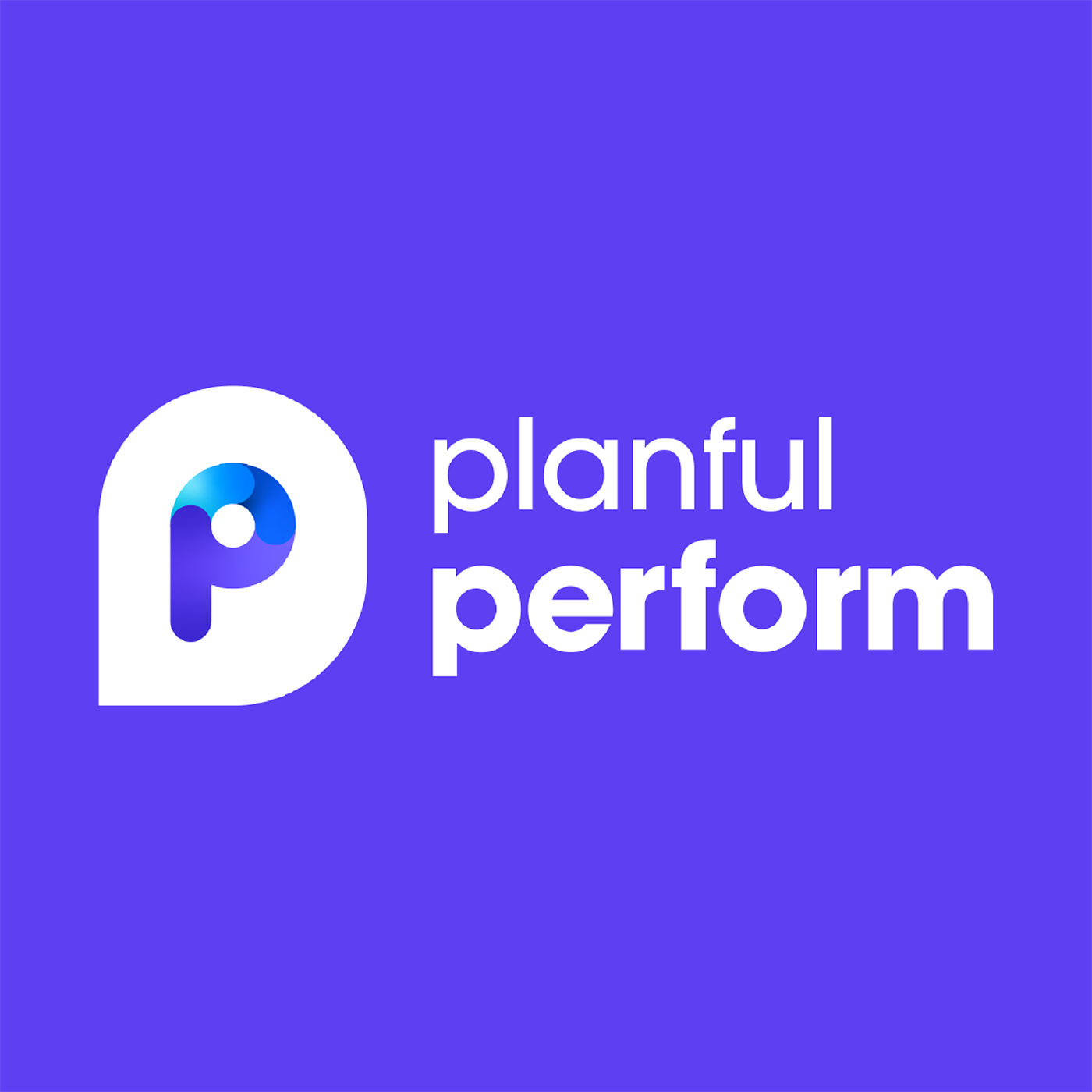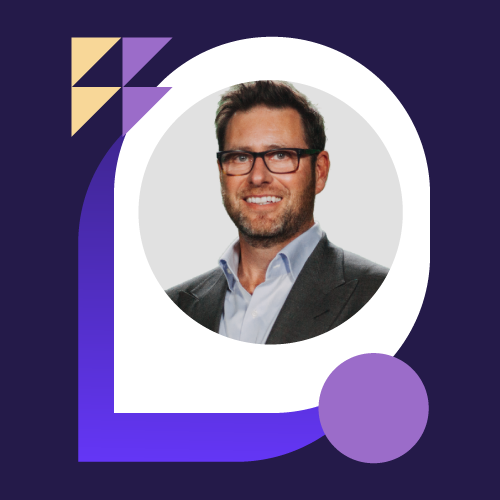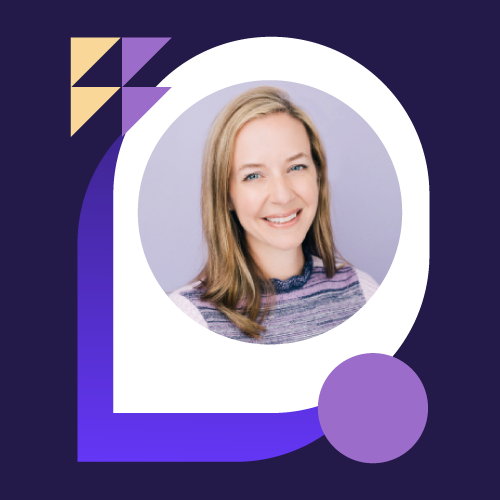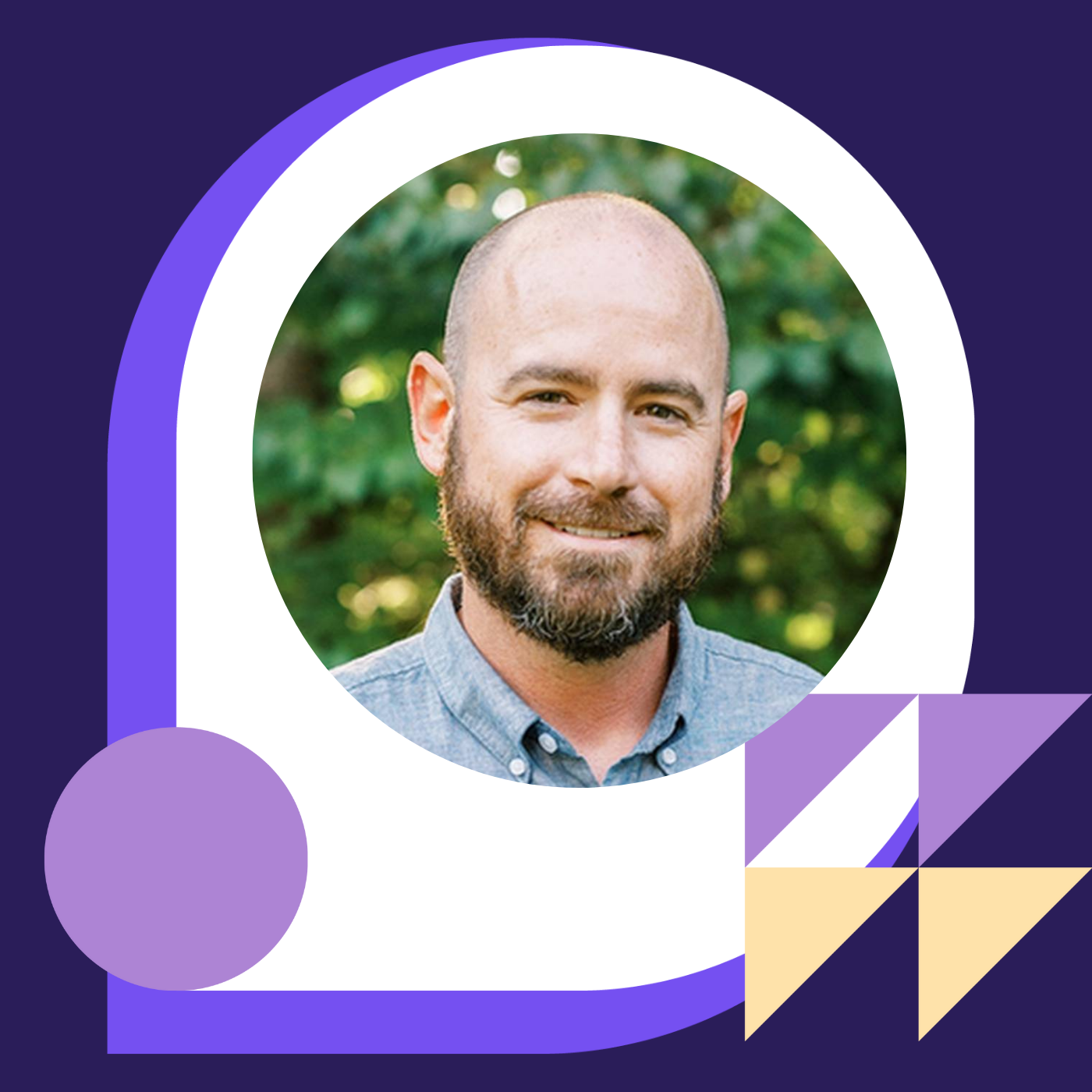Build a Winning People Strategy with Workforce Planning with Jonathan Li
- 0.5
- 1
- 1.25
- 1.5
- 1.75
- 2
Johnathan Li: Hello, everyone. Really, just such a great pleasure to be speaking to everyone today. Just a quick introduction of myself. My name is Jonathan Li. I'm a Senior Solution Consultant here with Planful. I've been with the organization for just under two years now, but prior to that, I articled with PWC and their audit and advisory services, then moved into industry for a number of years, and then really went into the dark side of going into the FinTech world here and just never looked back. But today I'm really excited to be speaking to you about the topic of building a winning people strategy. With COVID still at our doorsteps though, businesses are still in constant evolution of identifying methods to be cost efficient, recover from the last year and even build growth plans. Well, how do we do this in such a way that not only doesn't disrupt the business, but allows for better transparency, flexibility, is powerful and scalable in your organization, just like Ed shared? Well, let's take a second and recognize why you selected this session today. Well, why is work force planning so difficult and hard in our world? How do we leverage Planful to accelerate your workforce planning with pre- built and out of the box technology, leveraging Planful? And of course we'll dive in and show you exactly what it looks like and how it's done. But let's think back to this last year, what hasn't changed? When we think back to the last 18 months, business is ever changing with complexity and volatility that is unpredictable. Most dialed in are likely calling in from their home office, their kitchen, their living room, their makeshift bedroom. And this is a phenomenon that wouldn't have ever been dreamed of more, or even considered a reality less than 18 months ago. But here we are. As such, this reflects on your business as these changes forces us to redo, re- forecast and replace our existing plans. I was speaking with one of our customers and they recognize that COVID has dramatically changed how they plan as well. This customer shared that back in January of 2020, they were speaking with their leadership team. They were really excited with high hopes of having the fastest growing year in their organization from a people perspective, but boom, March 2020 happens, COVID hits. Now growth is completely halted. New scenarios emerging, such as, what does working from home look like? Do we have a scenario in place where employees can bring all their office equipment back home? And if they don't, do we need to consider offering a financial stipend, for example, on a monthly basis, or perhaps a reimbursement is a better strategy. From a cash flow perspective, well, what are the impacts? If to help hiring versus reorganizing some of our teams, what does that look like as well? And now, even more recently in the tail end of 2021, this same customer is coming back with rapid expansion and asking the inverse questions. They're asking about, well, if we scale at a rate of 4% in our people, what does the type of pipeline look like, we need to correspond with that kind of growth? How does growth drive our revenue assumptions and some of the overall costs with our people change? And so when we look at all of this, businesses have tried to combat this landscape. And we see really three areas of core focus, agility, collaboration, and strategy. Now both McKinsey and a Harvard business review study has shown that rapid change is required to quickly reconfigure strategies, structure, process, people, and technology towards value creation. The same customer shared that they were able to quickly leverage Planful to change their compensation definitions, to allow for rapid scenario planning with stipends, versus expenses. As we're thinking about digital transformation, this is really what's required for a collaborative environment and is necessary for operational productivity. More so than ever, we think about our current world today, we don't necessarily have the capabilities to walk across the hall, to pick up the phone and call up the different department heads, because it's just no longer possible in the world we live in. So how do we leverage technology such as Planful to alleviate the changes in our silos and really try to break down those silos in our organizations. And of course, investment in strategic initiatives and segments with higher growth and returns that provide an opportunity to carve out new competitive positioning. Only 39% of organizations are doing that today. Well, when we think about Planful, this is inherently and innately the reason why we exist, to help identify strategic initiatives, based on scenarios that we couldn't fathom creating to compare, due to the burden of time consuming nature of these exercise. I think back to my prior life, you think about how we create scenarios, it's that age old task of creating an Excel spreadsheet, hitting save as, calling it John's version, one John's version two. By the end of the week, you have a final, final version three version set up. And the challenges are, they don't reconcile back to anything. Well, how do we leverage Planful to solve these challenges? The difficulty lies also in the important question of, when we manage our largest expenses today, how do we link financial performance and employee productivity together for business success? What decisions do we need to make? And so that's really the Planful way. When HR sees people as an asset, and Finance sees people as a cost, there is an inherent discrepancy in what matters most for each team. The decisions that these two team makes have a tremendous ripple effect in all corners of the business. And that's why these two leaders need to work together to win. When you win, you really are able to gain the agility to mitigate risk, create a trust across the department that you didn't have before, and really focus on what matters for the business. To work in alignment as strategic advisors to the business really means that you have control and can impact how the business objectives are achieved. And it starts with ensuring the right people are in the right jobs at the right time and at the right costs. Now, without further ado, I'd love to dive right in and show you what this looks like in Planful and how it's done. We're going to be covering what it looks like to have an interactive solution that provides live feedback with the data that you bring in. We're going to take a look at how we manage our people efficiently and effectively. And we're going to go through that exercise together today. And last but not least, we're going to show you how streamline and responsive reporting is, as data flows both downstream and upstream seamlessly. So let's dive right in. Where we're going to start off today is this dashboard, because I think it tells a really compelling story of how we bring in both financial and non- financial data. You'll notice on my top left hand corner, we have some targets of our reps. And in this case, we're really showing the idea of bringing in perhaps our HRS system, whether it be ADP, Workday, BambooHR, the list goes on. It doesn't matter where this data lives, because we are data source agnostic and we can bring all that information into Planful. This also ties into data that's perhaps living in your CRM. So really what this is telling us is that now we can use this information to tell a compelling story and take action on it. Now, if you take a look to the right hand side in our total head count, I'd like to draw your eyes to the ASMs here. We have 60 area sales managers. We'll come back to that, because we're going to make some corrective changes or maybe update our plan moving forward. As I scroll down, as I start to think about visualizations as a whole, I personally think that visualizations are fantastic. They're a wonderful solution and a wonderful tool to tell a story, but we also need to be able to take action on them. So as you would probably imagine, everything that you see here is interactive and intuitive. So perhaps we're looking into the world of sales and marketing. We see that there's 208 heads moving from our new hire transfer ins. Maybe we want to understand who makes up these two consultants. You can certainly drill down and drill through. And I can actually drill through into the underlying details to understand who these individuals are. In my world here, the individuals that make up these two consultants are Terry and Jonathan. Now I know what everyone's thinking, salaries, benefits. We don't want that exposed to every layer of our organization and nor should they be exposed that way. So the entire solution of Planful is built upon user access and security. And that's really important. We think about the scalability about dashboarding, reporting, template building, those activities should be done on a one- off basis. They shouldn't have to be done time and time again. You should be able to create them once, based on user access and security that will govern what users see. And that's true with these dashboards that we're looking at today, the templates that we'll take a look at, and even the reporting. Now, now that we have our marching orders, we get a little bit of a lay of the land. We want to understand how we collaborate with other folks. So as we navigate over to this task manager view here, you're quickly going to see that we have a list of different tasks across our organization, whether it be financial reporting, updating our continuous plan. Well, perhaps I want to bring in our VP of sales. I'm going to look at an open rec review here. And this is for Q4 for our ASMs. Now I perhaps might want to include a due date. Maybe the end of next Friday. I might include a priority level, maybe a medium. And of course, I'm going to link in where all this activity occurs. Now, as I assign certain individuals, whether it be Brian, who's our VP of sales here. I want him to be involved in this process. So I can link in a task where this is to review our open recs for our ASMs for 60 individuals. Perhaps we want to bring in some new folks. Perhaps we want to do that scenario play of understanding what it looks like to bring on four more, five more, one more, it's up to you. Now, as you save these tasks, these are saved into the Planful solution, but Brian also gets that notification in his email, making it really streamlined so that we understand where those activities are. And of course, you have those statuses to check the progress of it as well. Now that we understand what's happening, let's go ahead and play that role and understand what does Brian see when he needs to go in and make those changes to his ASM and his budget. As we navigate over, I want to give you a little bit of an orientation here. You're seeing here, this is our planning control panel. You can see that we can have any number of scenarios. And once again, from a user access and security standpoint, you can provide access to any number of scenarios or maybe even only just to a handful. But this is where we can do that multi- scenario plan, whether it be your best case, your worst case, that 4% growth we were talking about from that customer standpoint. And of course, your budget hierarchy, quite frankly, this is how your organization budgets. Whether it be by location, by geographical departments, by projects, it's up to you. But as we navigate into this world here, we're going to take a look at how Brian might add in a head. You'll notice that we're accessing a template and it looks a lot like a roster of our employees. And it should, because all this information is brought in from your HRS systems. Now, as we navigate and think about the two different users who leverage this application, it might be the host of finance who wants to have a tabular view like this, where you have rows and columns. Perhaps the HR team is more familiar with a card type style view, where you can see a card of all your different employees. Again, we don't limit the views and how you want to structure your views of this world. Now we think back to what that task was. We want to look and navigate and isolate our ASMs. So let's take a look. Here's all our ASMs for our organization, our area sales managers. We're thinking about that scenario of updating our plan or perhaps making a multitude of changes to different scenarios. We can certainly do so. But I wanted to Kim Flores, for example. Now, of course, I'm going to duplicate this individual once. You can do this multiple times. Perhaps again, playing that role of multi- scenarios where you're having multiple new hires. What does that look like? Now, as I copy this individual over, I'm creating a duplicate of this profile because I want to hire someone just like Kim. And of course, if you were to do multiple changes or multiple additions, you can do mass updates as well. But let's take a look at this new individual. We'll call this our" to be hired." As we navigate down here, we're going to update that hire date. Perhaps we want to even do a mid- month hire in October. So we'll look at the second week of October, perhaps in 2021. Now, as I hit save, you're noticing that all those different profile items are brought over, because it's a duplicate, but automatically it's already calculated all my compensation items. Those salaries, benefits, taxes, bonuses. Now, most of you in the room might be shaking your head and say, well, how do I know that's actually happen within the application? Well, within Planful, this is where pre- built technology and out of the box or what we might call turnkey areas of our solution exists. As we look at the second tab of compensation, you'll notice that in my world here, our ASMs have a 401k match of 3% with a$ 9, 500 cap. We have a certain bonus. We have some dental insurance that are fixed, or maybe we have some variable rates. At the end of the day, these compensation items can be defined by your organization. Once again, leveraging drag and drop, point and click. There's no coding or proprietary scripting involved with this part of a solution. Now, what that mean for your folks is that if you wanted to get a detailed understanding of what this individual looks like, you can generate a report in a matter of seconds. You'll notice that all those compensation items are available to see. And as we scroll over to the month of October, we'll even see that proration. Down to the day, we'll see our FICAs, our FUTAs, our SUTAs all automatically calculated. And even that computer equipment that we're adding on, that's going to be automatically added to our fixed asset schedule, automatically amortized and depreciated over time. Well, what about when we're scaling? Not everyone looks the same. Well, that's all right. Perhaps we're not hiring an area sales manager. Perhaps we want to hire a contractor instead. You'll notice that as we make those changes, those compensation items change accordingly. So thinking back to that example with COVID, with that financial stipend, you can then go in and add those compensation items for yourself. And that's exactly what some of our customers are doing when they're doing their scenario plan. They're creating a variety of ways and methods in which they can potentially really complex calculations, but let the system do that calculation on your behalf. So as we navigate back, perhaps we are confident we want to hire our ASMs. A new ASM. We'll save this individual down. Previously tedious tasks, such as making even allocations, well, that's again handled by the application. You'll notice right away, you can allocate by entity, by department, product, project. It's entirely up to you. And of course, we have productized functionality that allows you to see what that allocation looks like and ensuring that you won't ever over allocate above a hundred percent. Now we think about this streamline approach. We've added this new" to be hired." It's a part of our application. The next thing that I need to consider is, well, how does this roll up into the reporting that the different stakeholders that need to see this information? Well, let's navigate over to exactly that view. As I open up this report, you're going to notice that we now have 61 area sales manager, instead of the 60 that we saw in that dashboard. You'll notice that in this report, we have target revenues, forecast, revenue variances. And this is really all just being brought on by a data driven approach, where we can even use information to do a driver based approach, forecast or plan. As we scan down, I can drill down and drill through to the underlying data once again, by intuitively double clicking. And I can actually see that" to be hired" we just added in moments ago. One thing I'm going to emphasize here is that, once again, because everything is governed by user access and security, as you scroll down here, you'll notice we have area sales managers, inside sales reps, business development reps, and even solution consultants. Now do each of the leaders within these areas need to see the other salaries and bonuses of others? Absolutely not. But once again, you have that confidence that as you distribute a report like this, your different department heads will only see the relevant details and data that pertains to them. Whereas other elements will be hidden from their view. Now, as we've gone over all of this, we want to come full circle and think back to, well, what has occurred and what's transpired. We navigate it back to that dashboard. And in everything that we see automatically, both updates, both upstream and downstream. So as we think through this dashboard, all the information, our deal sizes have updated. Our target reps are updating as well. We're noticing that our revenue in comparison, these are trending differently from what we saw before as we've made those changes. So once again, this is a full suite solution that allows you to plan at scale. And again, becomes a wonderful solution because there's all that pre- built functionality, where again, coding and scripting isn't required. I'd like to leave off with a final thought as we jump back into this presentation. This was a quote that was left by Barbara Schroick from Specialize. She said, whenever we create a workforce budget, our HR data is instantly loaded into Planful, saving a lot of time for the managers when planning their workforce. And that really resonates with me today, as we think back to how we need to be better financial advisors to our organization, but also thinking about how we can really break down those silos. Because once again, we want to hire the right individuals, for the right position, at the right time, and at the right cost. And so Planful really becomes a meaningful solution that allows you to do this in a streamlined pace, while breaking down silos, while being collaborative. And really having the agility to do this at scale. I'd like to thank everyone for joining our session here. I'm going to pass it back over to Ed and have it open for any Q& A, if there are any coming in.
Ed: Cool, Hey Jonathan, thanks for the session. And for our audience, if you see me turning to the right, I'm just checking the live Q& A feed. Jonathan, the first one that came in is from Arwa. And Arwa's question is, how can you pull a report that gives the employees... Excuse me, how do you pull a report that gives you all the employees that have the same four characters in their names, yet they are spread among many budgets. It feels a little bit like a trivia question, but you might be able to pull that together.
Johnathan Li: So Arwa great question. You were really thinking about just the allocation of certain individuals to certain departments. So from a reporting standpoint, that's really just understanding, well, what types of cuts or views do you have? Is it perhaps a P and L by department, or perhaps is understanding, well, if we need to think about the utilization of a certain individual, who's broken down by different buckets of costs. Well, we want to maybe see where John Doe is spending the majority of his or her time in a variety of different projects. So once again, understanding the core question and asking that question that you're asking me today is the right starting point. Because as long as you know how you want to slice the data, Planful can do it for you.
Ed: This one's a two- parter for me, Jonathan, but I think a lot of our audience will benefit from this question. We we've got 70 or so folks in the room right now, or on the stage. What would you say are some of the most frequent concerns that people have when deciding to take on workforce planning and the Planful solution? And then what would you say are maybe some of the more common, unexpected delighters that really, really make people happy that they decided to do so?
Johnathan Li: Absolutely. I'll start with the first one. Usually the hesitation is, well again, how does that conversation work between the house of finance versus our HR team? And a lot of often times is that we want to be again, strategic advisors to both sides. And so whoever is in the room today, whether you be the head of HR or the head of finance, the idea here is that we want to be better financial stewards. And so really having that conversation of understanding, well, how do we provide the next level of information that can help us solve some of the challenges strategically that we have today? Well, that's again, innately why Planful exists. So when we think about some of the things that delight a lot of our customer, it comes back down to a level of granularity. Things that would've previously taken hours, days, even weeks to do, is now cut down so that it can be done by minutes by the solution itself. So things like your FICAs, your FUTAs, your SUTAs, those are calculations that aren't overly complex, but again, it can be time consuming. And again, can be complex if you have different individuals remotely around the world. So similar to Lauren who presented earlier, I'm located up in Canada. We have very different compensation, but once again, leveraging Planful, we understand that those compensation definitions can be affected by State, by country, by location, even by the different titles of the folks in your organization.
Ed: Cool. And maybe to bring us home, Jonathan, here's a great couple of questions from Maria. The first would be, what is the best practice to distinguish between an active employee and a" to be hired"? I'm sure that's something that most of the audience is going to be thinking as they consider this.
Johnathan Li: Well, if you think about the different scenarios, your" to be hires" can be in your forecast. And it's really just to think about, well, what do those different scenarios look like in your world? Again, I think back to that customer that we spoke to a couple months back and they said, well, we had to play out four different scenarios. What happened if all the stores opened back and everything, business was back to normal, two months ago versus six months ago, what does that cash flow look like? And so playing out those scenarios, versus with your actuals and your" to be hires", well, it's just to play out and understand well, who are those individuals at what timeframe, and again, letting the system do those calculations for us. Now, again, because Planful is a connected system, it does play well with your actual data as well. So as you have data loading in from your HR IS system, we can reconcile that so that you have a clear understanding of who are those" to be hires", who are those reconciled individuals who were actually brought down to the system or brought into your organization. And how does that inaudible the" to be hired" world in Planful.
Ed: Okay. And we'll do just a quick time check here. I think we can probably take a handful more questions, but Jonathan, we might need some lightning round responses here. So we've got a question from Chris. Is there anything you can comment on perhaps on position management, Jonathan?
Johnathan Li: Yeah. Lightning around, I'll be quick. Position management, it's entirely up to you. Thinking back to those employee types, you can define any type of employees that you need. So your organization might look very different from the view you just saw. And that's quite all right. We work with large organizations that are in the Fortune 1000, all the way down to the SMD world. So happy to support those.
Ed: TBH is using attributes potentially, or perhaps a separate stat account?
Johnathan Li: So you can use both. That's a really great acknowledgement as well. We can leverage both custom attributes. You can define whether it be individuals that report up to a certain manager, or you can use data accounts to do those calculations. Once again, from a reporting standpoint, there's inherently no limitation. Truly, it's here to support your function as an HR or finance function to better understand what your people look like across the board. Whether it be your open recs or again, thinking back to how you can use your people to do driver based planning for your revenue or cost down the road.
Ed: Fabulous. And then I think this is the question that brings us home, Jonathan, and by the way, just because we are running close on time. Thank you for your session, Jonathan. Audience, thank you for your participation. This will be the last question that we take. So Charron Wang asks, we try to plan new hires based on drivers for roles like sales rep. Currently we have to do that within budget templates and structured planning. Is this going to be something that's going to be added to workforce planning in the future?
Johnathan Li: The idea at the end of the day is, you can bring that information over as well. So when you're thinking about driver based planning, instructor planning, perhaps you do all your planning in workforce planning, and that's great, that's fantastic. It does all those levels of aggregation for you. But if you're thinking about FTEs, there are absolutely attributes that you can add on that can start to drive the calculation for your driver based approach. So perhaps you have revenue targets and those are driven by sales reps that you have. Absolutely. That's the premise of how Planful connects all areas of the application together, really being one holistic solution.
Ed: Great. So with that, Jonathan, thank you for just enlightening everyone on, I think people planning in general, and then more importantly, how you can also make that easier, maybe even fun, in the Planful platform. So folks, if you've got any further questions, please be sure to reach out to Jonathan. You can route that through any of the contact information that we've got on the homepage. And if you're an existing Planful customer, or if you're already in the process of working with us, we'll be sure to route your questions to the appropriate contact as well. Cheers guys. Thank you.
DESCRIPTION
Your workforce is both your organization’s greatest strength and largest cost, which makes it a frustrating challenge when slow, manual, and disconnected processes block you from realizing your workforce’s full value. Learn how Planful for Workforce Planning turns HR and FP&A into strategic partners to close talent gaps, build a resilient workforce, and approach workforce planning with accurate, current, and trusted data from across the business.
Today's Guests








